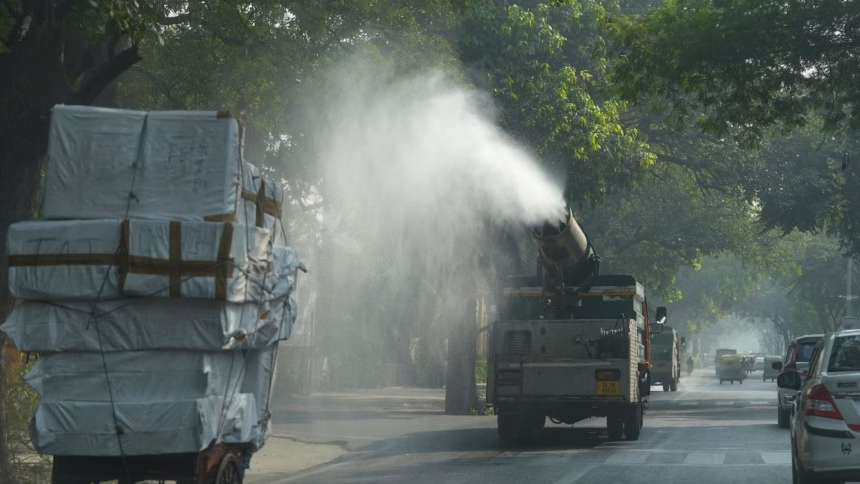India’s air quality commission on Wednesday withdrew Stage 3 curbs under the Graded Response Action Plan (GRAP) in the Delhi National Capital Region after pollution levels eased from “severe” to “very poor”, officials said.
The Commission for Air Quality Management (CAQM) said the capital’s Air Quality Index (AQI) was recorded at 327, prompting authorities to roll back some of the stricter measures introduced on November 11 when readings had crossed the “severe” threshold. The decision allows offices to end mandatory 50% work-from-home rules and enables schools to discontinue hybrid classes, Delhi Environment Minister Manjinder Singh Sirsa said.
However, restrictions under Stages 1 and 2 of GRAP remain in effect. Stage 2 measures, triggered when the AQI exceeds 300, include bans on coal and firewood use in restaurants and open eateries, and on diesel generator sets except for emergency or essential services. Authorities are also continuing mechanical road sweeping, water spraying to suppress dust, and stricter inspections at construction and demolition sites.
Stage 1 curbs, imposed on October 14, also remain in place. GRAP is a graded set of contingency measures designed to prevent further deterioration in air quality across Delhi and the wider NCR when pollution levels breach specific thresholds.
Despite the easing of restrictions, air quality across the region on Wednesday remained in the “very poor” category, according to the Sameer app, which publishes hourly data from the Central Pollution Control Board. Noida recorded an AQI of 348, Greater Noida 324 and Ghaziabad 334. In neighbouring Haryana, Gurugram reported an AQI of 272, categorised as “poor”, while Faridabad registered 208.
Air quality in Delhi typically declines sharply during the winter due to a combination of crop-residue burning in Punjab and Haryana, firecracker use during Diwali, vehicle emissions, lower wind speeds, falling temperatures and pollution from industries and coal-based power plants. The capital routinely ranks among the world’s most polluted cities during this period.
Discover more from Millat Times
Subscribe to get the latest posts sent to your email.


Leave a Reply